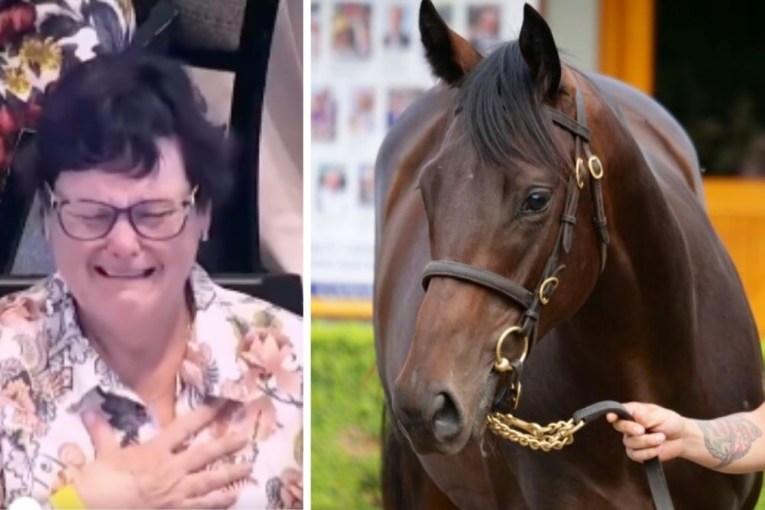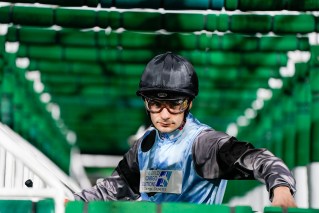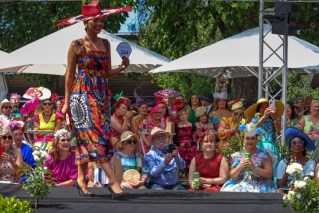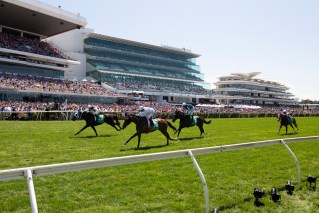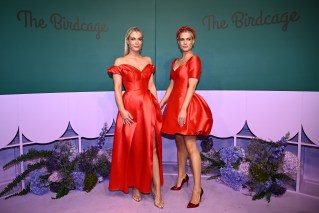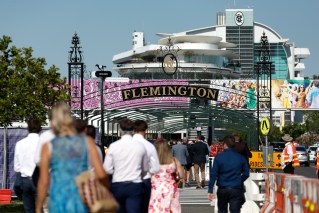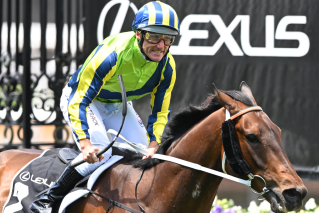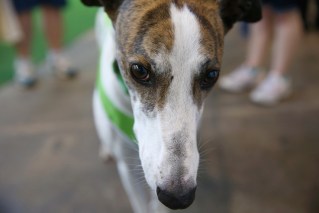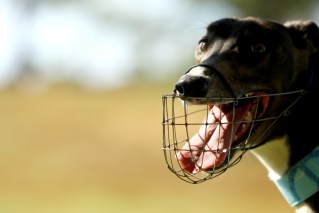Melbourne Cup: we’re to blame for foreign invasion
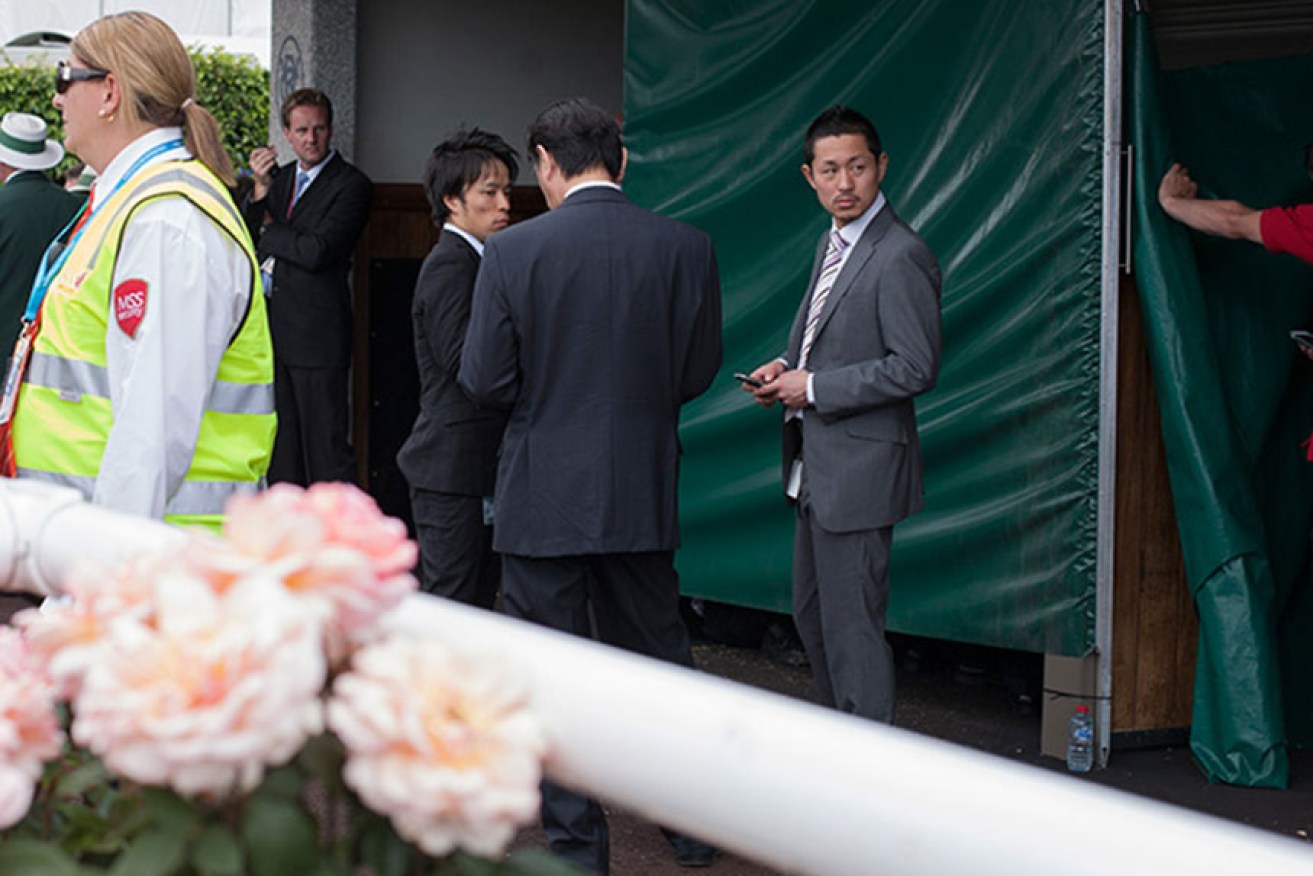
Japanese stayer Admire Rakti won the Caulfield Cup. Can he do the double? Photo: Getty
As the field thunders past the line in Tuesday’s 154th edition of the Melbourne Cup, odds are the holy grail of Australian racing will again fall into international hands.
The record number of foreign raiders tackling this year’s Cup, headed by Japanese stayer and recent Caulfield Cup winner Admire Rakti, will account for almost half of the 24-horse field.
The weight of numbers is both a sign of the soaring global appeal of our hallowed race and, regrettably, the ongoing dearth of quality in local staying ranks.
• The experts tip their Melbourne Cup winner
• Melbourne Cup a winner for national economy
In what is sounding like a broken record off the track, the flood of internationals has once again ignited the issue over the negative impact of the globalisation of the Cup and triggered calls to cap the number of overseas runners allowed to contest the race.
Iconic industry figures such as Bart Cummings and Gai Waterhouse are on the record in their stance that more Australian horses should be given a chance to run in the Cup.

French horse Americain wins the 2010 Cup. Photo: Getty
Just last week, champion trainer David Hayes was quoted backing a cap so the balance between internationals and locals does not spiral out of control.
The racing industry has worked hard to sell the Melbourne Cup as the greatest race in the world and long yearned for an international flavour to truly give the tag credence.
Irish trainer Dermot Weld planted the seed in 1993 when his stayer Vintage Crop took out the Cup, but realistically the race grew to another level when Japanese horses Delta Blues and Pop Rock ran the quinella in 2006, and lifted even further with French stars Americain and Dunaden going back-to-back in 2010 and 2011.
Calls to cap the number of international runners are premature and would serve only to devalue the race and undo all the gains that have already been achieved.
The international raiders and their band of artful jockeys and peculiar trainers add intrigue and colour to the race and have turned it into a truly international spectacle.
It sounds a bit churlish – we’re happy if they come, as long as they don’t win.
The ripple effect of taking such measures would be that fewer and fewer international trainers will fork out the hefty expense involved in travelling halfway across the world to take part in a race where they may or may not make the field.
The reason European stayers are lengths better than our horses is because they are nurtured and given time to mature and not pushed from an early age.
If only a certain number of international horses are invited to contest the Cup, as people like Hayes have flagged as an option, what happens if those horses fall by the wayside in the lead-up due to injury or form?
Can you imagine if this year’s field had only two or three international runners?
Other than Fawkner and Signoff, who are both live chances to take out the race, the remaining local crop of run-of-the-mill stayers would resemble a solid country cup rather than the grandest race of them all.
What’s more, it’s hard to know what an Australian stayer classifies as these days anyway.

Japanese stayer Admire Rakti won the Caulfield Cup. Can he do the double? Photo: Getty
Most local hopes, like last year’s winner Fiorente and 2012 winner Green Moon, have been imported from overseas and, while owned locally, they lack the genuine dinky-di feel of a horse bred at home that kicked off its career in Australia.
Nothing against buying stock overseas. It’s the ‘if-you-can’t-beat-them-join-them’ mentality and right now there are not many other options.
Undoubtedly, the real issue at the heart of this debate is not in the plainly evident superiority of the foreigners, but instead in the lack of quality staying talent in our own backyard.
And for that, the entire industry only has itself to blame.
For too long, Australian racing has been hell-bent on producing nippy two-year-olds and sprinter milers.
Australians have a proud and long history of producing stayers, but somewhere along the way the pendulum swung too far in the opposite direction.
The reason European stayers are lengths better than our horses is because they are nurtured and given time to mature and not pushed from an early age.
It’s not rocket science.
Trainers might argue that finding an owner willing to pour money into a horse and pay training costs without seeing their charge race until three or four years old is near on impossible.
That doesn’t make sense when considering that stayers are generally cheaper than the hundreds of thousands, even millions, that some owners lash out on sprinting types.
What it does reveal is that Australians are an impatient lot and want to strike it rich quick.
That’s all well and good, but then don’t whinge and moan about the issue come spring.
And if money is the goal, what’s often forgotten is that staying races are among our country’s most lucrative.

Last year’s winner was trained by Gai Waterhouse but bred in Ireland. Photo: Getty
The Caulfield Cup is worth $3 million and the Melbourne Cup double that.
Of course, all is by no means lost.
There are owners out there willing to take a punt on a stayer and, while tycoon Lloyd Williams might have more coin than most, good luck to him for investing so much into it.
Ditto with a trainer like Danny O’Brien, a man who loves plotting a course with a horse and taking his time.
It’s a shame his horse Caravan Rolls On didn’t squeeze into the Cup field.
In recent years there has been a concerted push to promote the benefits of breeding better stayers in Australia.
Victoria is just one example, where the Melbourne Premier Yearling Sale now has a Blue Riband session of hand-picked horses they believe will excel as middle-distance performers at three years and older.
In March, the niche section featured progeny from 22 different sires that included former Melbourne Cup winner Shocking, the recently retired breeding game-changer Zabeel, and So You Think’s dad High Chaparral.
The average for the 42 lots sold at Oaklands Junction was $129,405, with a son of Encosta De Lago from the Redoute’s Choice mare Special Episode fetching $360,000.
It’s a positive step and, while it may take some time, there’s no reason why Australia can’t once again breed a Melbourne Cup winner.
What’s more, some of these international winners might even stay and give something back to the game, like Americain, who currently stands at Nagambie’s Swettenham Stud.
What a romantic story it would be to see Americain’s progeny snare the Cup in a few years’ time.
It’s a bet worth taking.
